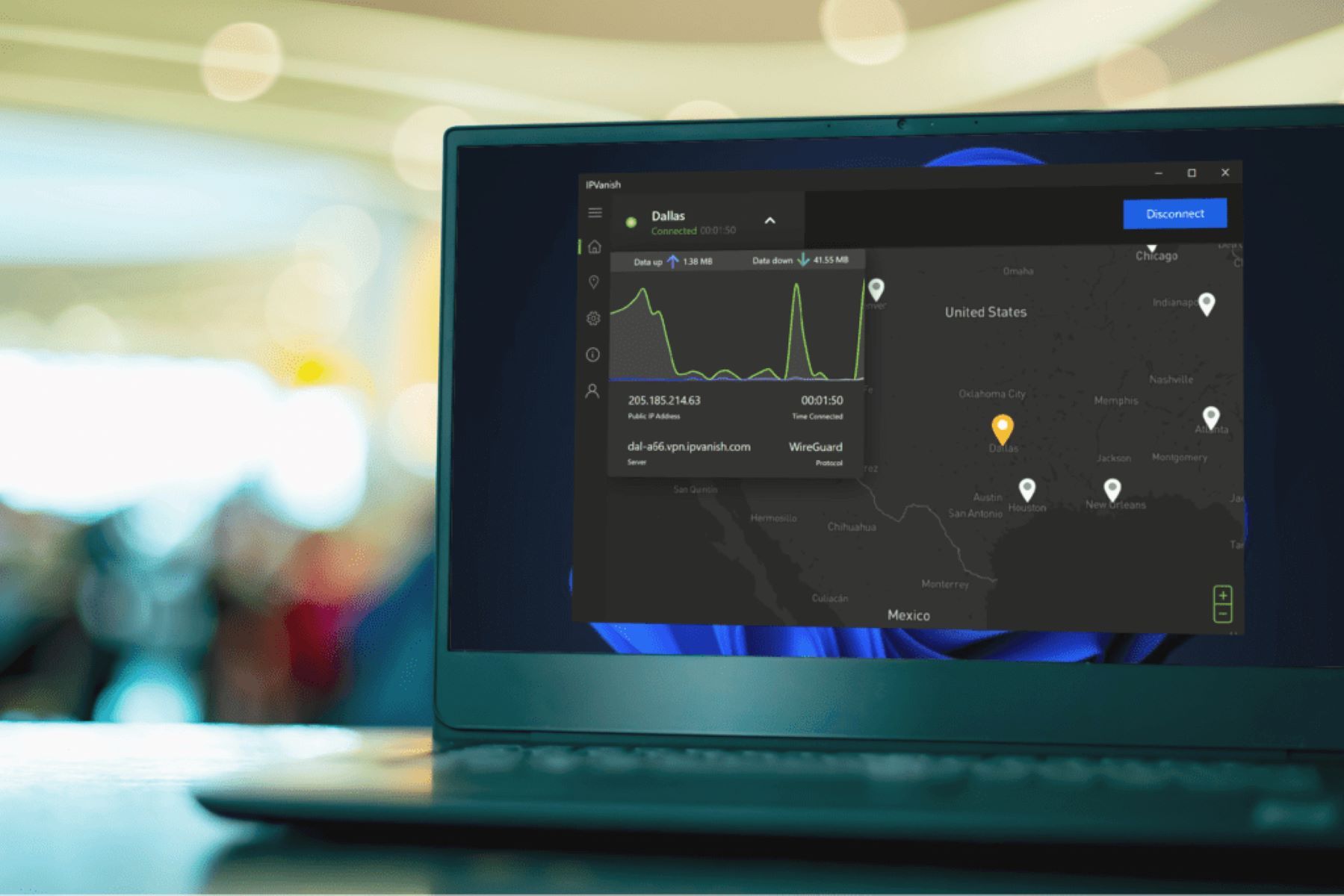Introduction
Welcome to the world of data analysis and statistical computing! If you’re a Mac user looking to download R Studio, you’re in the right place. R Studio is a powerful integrated development environment (IDE) that allows you to work with the R programming language, making it easier to analyze data, create visualizations, and develop statistical models. In this guide, we will walk you through the step-by-step process of downloading R Studio on your Mac.
Whether you’re a data scientist, a researcher, or someone who simply wants to explore the vast possibilities of data analysis, R Studio provides a user-friendly interface and a wide range of tools to help you with your projects. With its extensive library of packages, R Studio allows you to perform advanced statistical analyses, machine learning, and data visualization, making it a popular choice among data professionals.
Before we begin, it’s important to note that R Studio is built on top of the R programming language. Therefore, before downloading R Studio, you’ll need to have R installed on your Mac. If you haven’t already installed R, don’t worry – we’ll cover that in another guide. For now, let’s focus on downloading and installing R Studio.
Throughout this guide, we’ll provide detailed instructions and tips to ensure a smooth and hassle-free installation process. So, grab your Mac, fire up your preferred web browser, and let’s get started on the journey to exploring the world of data analysis with R Studio!
Step 1: Open Safari or your preferred web browser
To begin the process of downloading R Studio on your Mac, you’ll need to open your preferred web browser. Most Mac users typically use Safari as their default browser, but if you have a different browser of choice, feel free to use that instead. Opening your web browser is the first step towards accessing the R Studio website and initiating the download.
If you’re using a Mac, you can easily find the Safari browser by clicking on the blue compass icon located in your Dock. Alternatively, you can search for “Safari” in Spotlight (by clicking on the magnifying glass icon in the top-right corner of your screen) and then selecting the Safari app from the search results.
Once the Safari browser is open, you’ll be ready to proceed to the next step in our guide. It’s important to note that having an active internet connection is necessary to successfully download R Studio, so make sure you’re connected to a stable network before moving on.
Keep in mind that while Safari is the default browser for Mac, you can also download R Studio using other web browsers such as Google Chrome or Mozilla Firefox. These browsers offer similar functionalities and will work just as well in accessing the R Studio website.
Now that you have Safari open, you’re ready to move on to Step 2: Going to the R Studio Download page. This is where the real fun begins, as you’ll be one step closer to having R Studio installed on your Mac, ready to unleash its powerful data analysis capabilities.
Step 2: Go to the R Studio Download page
Now that you have your web browser open, it’s time to go to the R Studio download page. This is where you’ll find the official download link for R Studio that is compatible with your Mac operating system.
To get to the R Studio download page, you can either type the URL directly into the address bar or perform a search using your preferred search engine. Here’s the URL you can use: https://www.rstudio.com/products/rstudio/download
If you’re using Safari, you can simply click on the address bar at the top of the browser window and type in the URL. Press Enter or Return on your keyboard to navigate to the R Studio download page.
Alternatively, you can also perform a search for “R Studio download” in your chosen search engine. This will display a list of search results, with the official R Studio website usually appearing near the top. Click on the search result that leads to the R Studio website to access the download page.
Once you’ve reached the R Studio download page, you’ll see different options available for download. You’ll notice there are two main versions of R Studio: RStudio Desktop and RStudio Server. In this guide, we’ll focus on downloading RStudio Desktop, which is the version you’ll typically install on your Mac for personal use.
On the R Studio download page, you may also find information about the current version of R Studio, any additional features, and system requirements. Take a moment to familiarize yourself with this information, ensuring that your Mac meets the necessary specifications to run R Studio smoothly.
Now that you’re on the R Studio download page, it’s time to proceed to the next step: selecting the appropriate version of RStudio for your Mac. We’ll cover that in detail in Step 3, so let’s move forward and continue our journey towards acquiring R Studio on your Mac.
Step 3: Select “Download RStudio Desktop”
Now that you have reached the R Studio download page, it’s time to select the option to download RStudio Desktop. This is the version of R Studio that you’ll want to install on your Mac for personal use. RStudio Desktop provides a user-friendly interface and a comprehensive set of tools for data analysis and statistical computing.
On the download page, you’ll typically find a button or link that says “Download RStudio Desktop”. Look for this option and click on it to initiate the download process. This will redirect you to the download page specific to RStudio Desktop.
Before you click the download button, make sure you’re selecting the correct version of RStudio Desktop for your Mac. The download page usually offers options for different operating systems, such as macOS, Windows, and Linux. Locate the macOS version and ensure that it matches your Mac’s operating system version. If you’re unsure about your Mac’s operating system, you can check by clicking on the Apple menu in the top-left corner of your screen and selecting “About This Mac”.
It’s important to note that the RStudio Desktop download is available in different versions, such as the stable release and the preview release. The stable release is recommended for most users, as it provides a reliable and tested version of RStudio. However, if you’re feeling adventurous and want to try out the latest features and improvements, you can opt for the preview release.
Once you’ve selected the appropriate version of RStudio Desktop and made your decision between the stable or preview release, click on the download button. Your web browser will begin downloading the RStudio Desktop installer package to your Mac.
Now that you’ve successfully selected and initiated the download of RStudio Desktop, it’s time to move on to the next step: choosing the location to save the downloaded file. We’ll cover this in detail in Step 4, so let’s keep the momentum going as you’re getting closer to having R Studio installed on your Mac.
Step 4: Choose the version that is appropriate for your Mac
After initiating the download of RStudio Desktop in Step 3, your web browser will start downloading the installer package. Once the download is complete, it’s time to choose the version of RStudio that is appropriate for your Mac.
Before proceeding, it’s crucial to understand your Mac’s system requirements to ensure compatibility with the RStudio version you’re about to install. Check the R Studio documentation or the download page for any specific system requirements or recommendations.
Typically, the macOS version to download will be appropriate for most recent Macs. However, if you’re using an older Mac with an outdated operating system, make sure to select the version that is compatible with your macOS version.
While choosing the appropriate version, you may also come across different options, such as different builds of RStudio (e.g., standard build, daily build, etc.) or different language distributions. The standard build is usually the recommended choice for most users, as it includes all the necessary components for regular usage. However, if you have specific requirements or preferences, such as a different language version, you may choose a different option.
It’s worth noting that the RStudio download page may also provide additional information about the version you’re about to download. This can include release notes detailing new features, bug fixes, or known issues. Take a moment to briefly skim through this information to understand what improvements or changes you can expect in this version.
Once you have determined the appropriate version of RStudio for your Mac, proceed to click on the downloaded installer file. This will launch the RStudio installer and guide you through the installation process. Note that some installations may require administrative privileges, so make sure you have the necessary access to complete the installation.
Congratulations! You have now chosen the version of RStudio that is suitable for your Mac. In the next step, we will cover how to locate the downloaded RStudio file on your Mac, so you can continue with the installation process seamlessly. Stay with us as we get closer to having RStudio up and running on your Mac!
Step 5: Click on the download link
Now that you have chosen the appropriate version of RStudio for your Mac in step 4, it’s time to proceed to the next step: clicking on the download link. By clicking on the download link, you will initiate the process of downloading the RStudio installer package to your Mac.
Locate the downloaded RStudio file either in your web browser’s download manager or in your Downloads folder. If you’re using Safari, you can find the downloads by clicking on the downwards arrow icon at the top of the Safari window.
Once you’ve located the downloaded RStudio file, simply click on it to begin the installation process. Depending on your Mac’s settings, you may be prompted with additional security confirmation messages to ensure that you want to open the downloaded file.
When you click on the downloaded file, the RStudio installer window will appear, guiding you through the installation process. The installer will typically display information about the version you’re installing and may provide additional options or settings to customize your installation.
It’s important to carefully read through the installer instructions and settings to ensure you’re installing RStudio according to your preferences. You may have the option to choose the installation location, agree to terms and conditions, or select additional components to install.
During the installation process, your Mac may prompt you for administrative privileges, such as entering your user password. This is normal and necessary to ensure that the installation can make the required changes to your system.
Once you’ve reviewed and customized the installation settings, proceed with the installation process by following the on-screen instructions. The installer will copy the necessary files and components to your Mac, preparing RStudio for usage.
After the installation is complete, you may see a confirmation message indicating that RStudio has been successfully installed on your Mac. Take a moment to celebrate this milestone as you’re now one step closer to unleashing the power of RStudio!
With the installation complete, you’re ready to move on to the next step: launching RStudio on your Mac. We’ll cover this in detail in step 9, so let’s keep the momentum going as you’re almost ready to dive into the world of data analysis with RStudio on your Mac!
Step 6: Locate the downloaded RStudio file
After clicking on the download link and initiating the installation process in the previous step, you’ll need to locate the downloaded RStudio file on your Mac. This step is crucial as it allows you to proceed with the installation and launch RStudio successfully.
By default, most web browsers save downloaded files to the Downloads folder on your Mac. To locate the downloaded RStudio file, go to your Finder and navigate to the Downloads folder. You can quickly access the Downloads folder by clicking on the Finder icon in your Dock, followed by clicking on “Downloads” in the left sidebar.
Once you’re in the Downloads folder, look for the RStudio installer package file. The file will usually have a name similar to “RStudio-x.x.x.dmg”, where “x.x.x” represents the version number of RStudio you downloaded.
If you have a large number of files in your Downloads folder, you can use the search bar in the top-right corner of the Finder window to search for “RStudio”. Typing “RStudio” in the search bar will filter the results and display only the files related to RStudio.
Once you’ve located the RStudio installer package file, double click on it to open the installer. This will initiate the installation process of RStudio on your Mac.
If, for any reason, you cannot locate the downloaded RStudio file in your Downloads folder, you may want to check your web browser’s download history. Browsers often provide a download history that lists all the files you’ve downloaded, making it easier to find the RStudio installer file.
Keep in mind that if you’ve changed the default download location in your web browser settings, the RStudio installer file may be located in a different folder. In that case, navigate to the appropriate folder to locate the downloaded RStudio file.
Now that you’ve successfully located the downloaded RStudio file, you’re ready to continue with the installation process. In the next step, we’ll guide you through the process of opening the RStudio installer and following the installation instructions. Stay with us as we’re just a few steps away from having RStudio up and running on your Mac!
Step 7: Open the RStudio installer
Now that you have located the downloaded RStudio file on your Mac in Step 6, it’s time to open the RStudio installer. Opening the installer will kickstart the installation process and guide you through the necessary steps to successfully install RStudio on your Mac.
To open the RStudio installer, simply double-click on the RStudio installer package file. This will typically have a name similar to “RStudio-x.x.x.dmg”, where “x.x.x” represents the version number of RStudio you downloaded.
When you double-click on the installer package, a new window will appear, displaying the contents of the package. In this window, you’ll typically see the RStudio logo, along with other files and folders related to the installation process.
At this point, you may be prompted with a security warning asking if you’re sure you want to open the installer. This is a standard security measure to ensure that you’re intentionally opening the file. Click “Open” or “Continue” to proceed with the installation process.
Once the installer window is open, you’ll see various options and settings related to the installation of RStudio. These can include terms and conditions, customization options, and guidance on where to install RStudio.
Take a moment to review the information provided in the installer window. This can include important instructions or additional information about the installation process. Make sure to read through any terms and conditions to understand the licensing terms of RStudio.
During the installation process, you may have the option to customize the installation location or select additional components to install, such as R packages or dependencies. If you’re unsure about any customization settings, it’s generally safe to leave the default options selected.
Once you’ve reviewed the installer window and made any necessary customization choices, click on the “Continue” or “Install” button to proceed with the installation. Your Mac may prompt you for your user password to authorize the installation process. This is normal and necessary for your Mac to make the required changes.
After clicking “Continue” or “Install”, the installation process will begin, and you will see a progress bar indicating the installation status. The time it takes to complete the installation may vary depending on your Mac’s performance and the chosen installation options.
Once the installation process is complete, you’ll receive a notification or a confirmation message indicating that the installation was successful. Congratulations! You’re now ready to move on to the next step: launching RStudio on your Mac. We’ll cover this in more detail in Step 9, so let’s keep the momentum going as you’re just a few steps away from exploring the data analysis capabilities of RStudio!
Step 8: Follow the installation instructions
After opening the RStudio installer in the previous step, you’ll need to follow the installation instructions provided to ensure a successful installation of RStudio on your Mac.
The installer window will guide you through the installation process and may present you with various options and settings to customize your RStudio installation experience.
Read the instructions carefully and make any necessary choices as you progress through the installation process. Some of the common instructions you may encounter include:
- Accepting the terms and conditions: Review the license agreement presented in the installer window and indicate your acceptance to proceed with the installation.
- Selecting the installation location: Choose the folder or directory where you want RStudio to be installed. The default location is usually recommended, but you can change it if desired.
- Choosing additional components: You may have the option to install additional packages or components that enhance the functionality of RStudio. Select any desired components based on your needs.
- Customizing shortcuts and menu options: The installer may provide options to customize the shortcuts and menu entries for RStudio. Adjust these settings according to your preferences.
It’s important to carefully review each instruction and make the appropriate choices based on your preferences and requirements. Take your time to ensure that the installation settings align with your needs.
Once you’ve made your choices and followed the instructions provided by the installer, proceed to the next step in the installation process, which is typically initiating the actual installation by clicking on the “Install” or “Continue” button.
During the installation, you may be asked for your administrative password to authorize necessary system changes. Enter your password when prompted to allow the installer to make the required modifications to your Mac.
After clicking the “Install” or “Continue” button, the installation process will begin, and you’ll see a progress indicator showing the status of the installation. The duration of the installation may vary depending on your Mac’s performance and the customization options you selected.
Once the installation is complete, you’ll receive a notification or confirmation message indicating the successful installation of RStudio on your Mac. Congratulations! You’re now ready to move on to the final step: launching RStudio and beginning your data analysis journey. We’ll cover this in Step 9, so let’s keep going as you’re moments away from exploring the powerful features of RStudio!
Step 9: Launch RStudio once the installation is complete
After successfully completing the installation of RStudio on your Mac, it’s time to launch the application and begin your data analysis journey. Launching RStudio is a straightforward process that allows you to access the powerful features and tools offered by this integrated development environment (IDE).
Locate the RStudio icon on your desktop or in your Applications folder. It is usually represented by the RStudio logo, which consists of a blue and white circle with the letters “R” and “Studio” in it. Double-click on the icon to open RStudio.
Upon launching RStudio, you will be greeted by the RStudio IDE, which provides a user-friendly interface for writing, running, and debugging R code. The IDE encompasses various panels, including source code editor, console, environment, and various toolbars, which facilitate your data analysis tasks.
Take a moment to familiarize yourself with the layout and basic functionalities of the RStudio IDE. The source code editor allows you to write and edit R scripts and functions, while the console serves as an interactive environment for executing R code line-by-line or in batches.
The environment panel displays information about your current R session, including variables, packages, and data objects, making it easier to manage and analyze your datasets. Additionally, the toolbar provides quick access to commonly used features and commands.
With RStudio successfully launched, you’re now ready to begin your data analysis journey. You can start by creating a new R script, importing your data, and exploring the various statistical and visualization functionalities offered by RStudio.
If you’re new to R or need help getting started, you can access the RStudio documentation, online tutorials, or community forums to gain insights and find solutions to your data analysis challenges.
Congratulations! You have successfully downloaded and installed RStudio on your Mac, and you’re now ready to dive into the world of data analysis and statistical computing. Enjoy exploring the countless possibilities and unleashing the power of RStudio to analyze data, generate insights, and make informed decisions in your projects!
Step 10: Congratulations, you have successfully downloaded RStudio on your Mac!
Congratulations! You have successfully completed all the steps to download and install RStudio on your Mac. By following this guide, you now have access to a powerful integrated development environment (IDE) that will enable you to explore and analyze data using the R programming language.
RStudio provides a user-friendly interface, advanced statistical tools, and a vast library of packages that empower you to perform data analysis, develop statistical models, create visualizations, and much more. With RStudio on your Mac, you have a powerful toolkit at your fingertips for unlocking insights from your data.
Now that RStudio is installed, you can start unleashing its capabilities by creating and running R scripts, importing datasets, and using R’s extensive range of functions and packages. Whether you’re a data scientist, a researcher, or someone looking to dive into the world of data analysis, RStudio provides you with the tools and flexibility to bring your data analysis projects to life.
As you embark on your data analysis journey with RStudio, don’t forget to take advantage of the vast resources available to you. The R community is vibrant and supportive, with numerous online forums, tutorials, and documentation available to help you deepen your understanding of R and maximize your productivity with RStudio.
Continue to explore, learn, and experiment with RStudio as you gain familiarity with its features and expand your data analysis skills. The possibilities are endless, and with RStudio on your side, you’ll be well-equipped to tackle any data challenge that comes your way.
Enjoy your newfound journey with RStudio on your Mac, and may your data analysis endeavors be fruitful and insightful!

























